Mastiff
Mastiffs are direct descendants of the ancient Molossian dogs that have been known for 5.000 years. The modern version of the Mastiff breed is over 500 years old and has been known from the time the Romans invaded Britain. These dogs are incredibly massive, they might not be the tallest, but they certainly are among the heaviest. The biggest-ever Mastiff recorded was a staggering 323 lbs (146,5 kg).
This breed is also known by the name English Mastiff or Old English Mastiff. They might look scary, and people unfamiliar with the breed might feel threatened, but the truth is these dogs have a calm and sweet temperament. Like any other puppy, Mastiff puppies are playful and active. Most of them grow up to be calm and peaceful dogs that love nothing more than to be around their family.
They were used as war dogs and in arenas to fight against lions and gladiators, so it is no wonder that modern-day Mastiffs have a protective nature. They will not back down from anything and will try and protect their family no matter the cost.
These dogs do have a strong protective instinct, and that is what they have mainly been used for. They were the breed of choice of the English gamekeepers who wanted a strong dog to help them patrol grounds and keep estates safe and intruder free.

Height:
27,5-32 in (70-81 cm)

Weight:
130-220 lb (59-100 kg)

Origin:
Great Britain

Life Expectancy:
6-10 years
Dog Breed Characteristics
Appearance
To state the obvious, the Mastiff exudes bulk and power in its appearance. The large, square head is quite broad, with a lot of masseter muscle development in the forehead. The crown of the head is flat and square, but the eyelids are heavily muscled, with a slight arch above each eye.
There is a noticeable ridge between the muscles on either side that runs from midway up the crown to the top of the muzzle. The muzzle is broad and square, short in relation to the overall proportions of the head, and the strong jaws have well-developed flews that allow the large teeth to be seen when the dog is at rest. The eyes are large and typically brown in color.
The massive musculature of the neck, which is so pronounced as to create an arch at the top, is one of the most striking features of a Mastiff. This muscling extends all the way down the long, broad back. Mastiffs have a large chest that is both wide and deep, as well as deep flanks that lack a distinct abdominal tuck.

Because of the breadth of the body, the limbs are held wide apart and are very well muscled and boned. Although many larger individuals appear cumbersome at a trot, the breed should be sound in motion, with a level back.
Coat type and color
The Mastiff has a short, close-lying coat that is quite coarse. Though Mastiffs come in a variety of colors, the following are those recognized by the breed standard:
- Apricot
- Brindle
- Fawn
Variations in black and blue are not uncommon, but they are not eligible for registration. Mastiffs all have a black mask that covers their muzzle, eyes, and ears.
Temperament
Mastiffs are calm and even-tempered dogs who are affectionate and protective of their owners. As puppies, they are pretty comical, being more skittish and awkward, but they mature quite quickly for such a large dog. They are usually uninterested in strangers and should be well-socialized to feel at ease in the company of others.
Any nervous tendencies must be addressed early on because this giant's protective instincts can lead to some awkward situations if they become overly distrustful of strangers. Mastiffs are also very reliant on feedback from their owners. They can become withdrawn or nervous in response to criticism, so it is important not to confuse size with insensitivity.
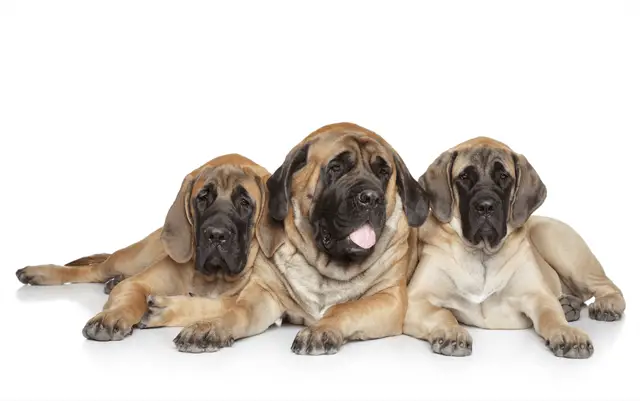
The breed is frequently described as lazy, and getting them out of bed can be challenging at times. Most Mastiffs will happily live in a large indoor setting if given enough exercise. However, they will not be able to climb stairs in their senior years, which is critical to remember because these large dogs age quickly.
Care guide
Mastiffs are large dogs with extensive care requirements. They are not the most energetic breed, so meeting their exercise requirements should be relatively straightforward. These dogs, however, still require grooming, training, and socialization. Make sure to consult with your veterinarian because they can assist you in developing an excellent Mastiff care routine. The following are the most critical aspects of Mastiff care.
Training
The Mastiff is not a breed for people who want to win obedience competitions. Though eager to please, the breed has perfected the art of appearing interested while stubbornly refusing to absorb anything from a training session. Fortunately, most are easy to control with gentle coaxing and understanding.
They are relatively easy to housetrain as puppies, but their value as students end there! This is not to say that one should not try to train Mastiff, as the process has other advantages, such as reinforcing the family hierarchy.
As previously discussed, the socialization of young Mastiffs is critical. It should include positive interactions with both people and other dogs to avoid later issues with dog–dog or dog–human aggression.
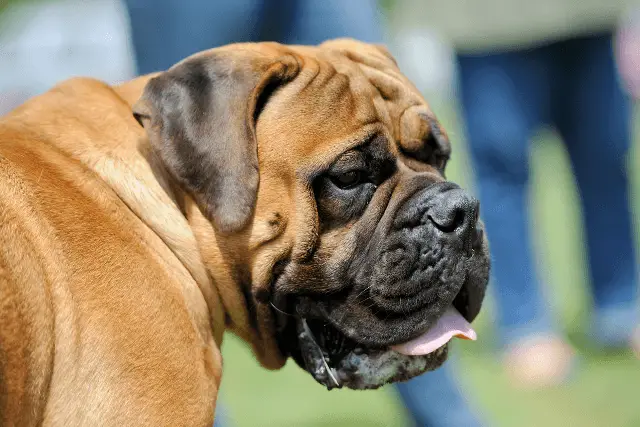
Socialization
We've already mentioned how important socialization is. That may be an understatement when it comes to such a powerful breed as the Mastiff. Getting an adult dog with behavioral issues is one of the worst things that can happen to a Mastiff owner.
You should begin socializing your Mastiff puppy as soon as they arrive at your home. As quickly as possible, get them used to other people. You don't want your dog to develop an overprotective attitude. Because those instincts are already present in your dog's temperament, this can happen very quickly.
As soon as your puppy has received the necessary vaccinations, take them to busy streets, parks, and other places where they can learn how to interact safely with other dogs and people. It is the most effective way to ensure that the puppy grows into a well-behaved, confident adult dog.
Mastiff and children
Mastiffs adore kids. Having said that, they are large dogs who can knock a toddler over with a swipe of the tail. They work best in homes with older children. Keep in mind that Mastiffs are not ponies and cannot be ridden by children. Children who attempt to ride your Mastiff may injure them.
It is critical to teach your children how to interact safely with dogs in general, and especially with one of this size. Teach them to avoid approaching the dog while it is sleeping or eating. Teach them how to play safely to avoid injuries on both sides.
Mastiff and other pets
Mastiffs will tolerate other dogs and cats in general, especially if they have been raised with them. If you're adding a second adult Mastiff to your family, you might want to get one of the opposite sex to avoid any disagreements about who's the boss. Because Mastiffs are protective, any pet in the home will become a part of your Mastiff's “protective circle.”
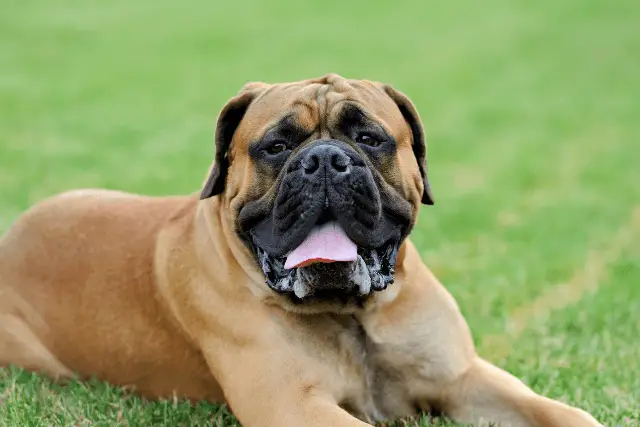
Exercise needs
Mastiffs are house dogs. They can adapt to any environment, city, or country, but they thrive in homes with fenced-in yards. Their exercise requirements are moderate. At least two 20- to 30-minute walks per day will be more than enough for an adult Mastiff to be happy.
They are not suitable jogging companions due to their massive size. They easily overheat, and the stress of running can cause joint damage. Walks are best done in the mornings and evenings when it is cool. Bring water with you during the day in case they get hot.
Puppies are more active and require free play in a fenced yard. However, it's vital to limit jumping, long walks, and other exercises that could harm their still-developing bones, muscles, and tendons until they reach physical maturity at 18 months of age. Allow young puppies to go at their own pace when playing, walking, or resting.
You can gradually increase the amount of exercise they receive to a moderate level once they're 18 months old. Learn to recognize your Mastiff's signs of fatigue at any age because they'll never let you know they're tired; they only want to please you.
Grooming
Mastiffs are considered average “shedders.” However, because a Mastiff has a large surface area, even light shedding can leave a lot of hair around the house. Brushing twice a week will help to keep this under control, and baths on occasion will help to keep the coarse coat in good condition.
To avoid bacterial infections, they should clean their wrinkles on a daily basis. Wipe them down with a damp washcloth and then thoroughly dry them. After each meal, do the same for the flews (the upper lip's hanging part).
Brush your Mastiff's teeth at least twice a week to remove tartar and bacteria buildup. Brushing twice a day is even better. It’s the best way to avoid gum disease and bad breath.
If your dog's nails don't wear down naturally, trim them once or twice a month to avoid painful tears and other issues. They're too long if you can hear them clicking on the floor.
Their ears should be checked on a weekly basis for redness or odor, which can indicate an infection. When cleaning your Mastiff’s ears, it’s best to use a cotton ball dampened with a gentle, pH-balanced ear cleaner. Again, it is a great way to prevent infections. Do not insert anything into the ear canal; instead, clean the outside of the ear.
Mastiffs' anal glands have occasionally been impacted. This occurs when the dog is unable to empty the glands naturally by defecating. Take your Mastiff to the veterinarian or a professional groomer if you notice them "scooting" or obsessively licking the anal area. You can also learn to do this yourself, though most of us prefer to delegate this unpleasant task to someone else.
Health
Although the Mastiff is generally regarded as a healthy breed, it has a relatively short lifespan of only 6-10 years. Not all Mastiffs will contract any or all of these diseases. Still, it's essential to be aware of them if you're thinking about getting one. If you know which diseases these dogs are prone to, you may be able to detect problems early on. This means a faster response and treatment. Here are a few things to keep an eye out for:
- Seizures - Seizures can be caused by various factors, including epilepsy and trauma. They are frequently treatable with medication.
- Behavioral abnormalities - Though Mastiffs are normally very calm, it is possible for them to develop aggression issues, particularly in the hands of timid or inexperienced male dog owners.
- Demodicosis - Mastiffs, like their cousin, the Dogue de Bordeaux, are among the dogs most commonly afflicted by recurring infestations of Demodex mites.
- Cystinuria - Cystinuria is a kidney defect that is inherited. The amino acid cystine is filtered by the kidneys and does not enter the urine.
- Gastric torsion - Also known as bloat, is a potentially fatal condition that affects large, deep-chested dogs. The stomach twists around on itself, preventing gasses from escaping.
- Hypothyroidism - Mastiffs, like many other breeds, are prone to thyroid dysfunction. With an average onset age of 3–5 years.
- Osteochondritis dissecans - A condition that is particularly common in young Mastiffs who are fed poor-quality food and/or exercised excessively before the age of two.
- Lymphosarcoma - A type of cancer that affects the lymphatic system, which runs throughout the body in a network of interconnected lymph nodes.
- Hip dysplasia - A genetic condition in which the thighbone does not fit snugly into the hip joint.
- Obesity - If not properly exercised, the Mastiff is prone to gaining weight.
- Progressive retinal atrophy - An eye condition that affects the retina and causes it to deteriorate over time.
Mastiff breeders
Before you start looking for Mastiff breeders, make sure you can handle such a large breed. Such large dogs require a lot of space, and Mastiffs prefer to be with their family. Make sure you have enough time and resources to care for this dog. If you decide to get one, make sure you get it from a registered and reputable breeder who cares about their dogs' physical and mental health.
These dogs became very popular, and many unethical and immoral breeders began to breed these dogs for profit, without regard for the puppy's health, temperament, or well-being.
Purchasing a dog from a responsible breeder will cost you more money. Still, you can be sure you’ll receive a puppy that is as healthy as possible. If you are unable or unwilling to purchase a dog, we recommend that you look for local animal shelters where you may be able to find a Mastiff dog.
Begin training and socialization as soon as you bring your new puppy home. As a result, you will have a well-mannered dog in whom you can put your trust.
If you're not sure if this is the right breed for you, check out this FREE GUIDE to help you decide which dog breed is best for you.
World Dog Finder team

Updated at31.08.2023.
Breed History
The Mastiff is descended from one of the oldest dog breeds, the Molosser, which most likely originated in Asia's mountains, possibly in Tibet or northern India. They were most likely used to protect flocks from predators in those cold, high passes.
These Molossers had strong bones, a short muzzle, a short, well-muscled neck, and hanging ears. They are ancestors of many modern breeds, including the Tibetan Mastiff, Saint Bernard, Rottweiler, Dogue de Bordeaux, and many others.
Mastiff-type dogs have been depicted in Egyptian, Babylonian, and classical Greek civilizations throughout history. Archaeologists excavating the palace of Babylonian ruler Ashurbanipal discovered bas-reliefs of a Mastiff-type dog fighting lions dating back to the seventh century BCE—more than 2,500 years ago.
Mastiff-type dogs have been used as guard dogs, war dogs, and entertainment for millennia, pitted against lions and other fierce animals. The dogs traveled the known world, arriving with armies or being transported by traders.
They were admired for their size and bravery wherever they went. Kublai Khan is said to have had a hunting and war kennel with 5,000 Mastiffs. Hannibal traversed the Alps on the backs of trained war Mastiffs. During their journey, the war dogs interbred with local dogs. Their offspring became the foundation for breeds such as Saint Bernard, Rottweiler, and others. Even the Pug, which is described as a miniature Mastiff, can claim Molosser ancestry.

The massive dogs guarded estates in England, where the modern Mastiff was developed, patrolling the grounds at night. Lyme Hall was famous for its Mastiff strain, bred from the 15th century to the early 20th century and helped save the breed from extinction.
The brutal sports of bear-baiting, bull-baiting, and dog-fighting were outlawed in 1835, and the breed nearly died out. However, the revival of the Mastiff was aided by the rise of dog shows in the mid-nineteenth century. They nearly died out again during World Wars I and II due to food shortages. Still, a pair of Mastiff puppies imported from Canada after WWII helped bring them back from the brink.
Mastiffs most likely arrived in the United States during colonial times, but the first Mastiff club was formed in this country in 1879. The breed was recognized in 1885, and the first registered specimen was a Mastiff named Bayard. The current Mastiff Club of America was founded in 1929 and continues to oversee the breed almost 80 years later.
Today, the gentle nature and massive size of the Mastiff make them a much-loved companion worldwide.
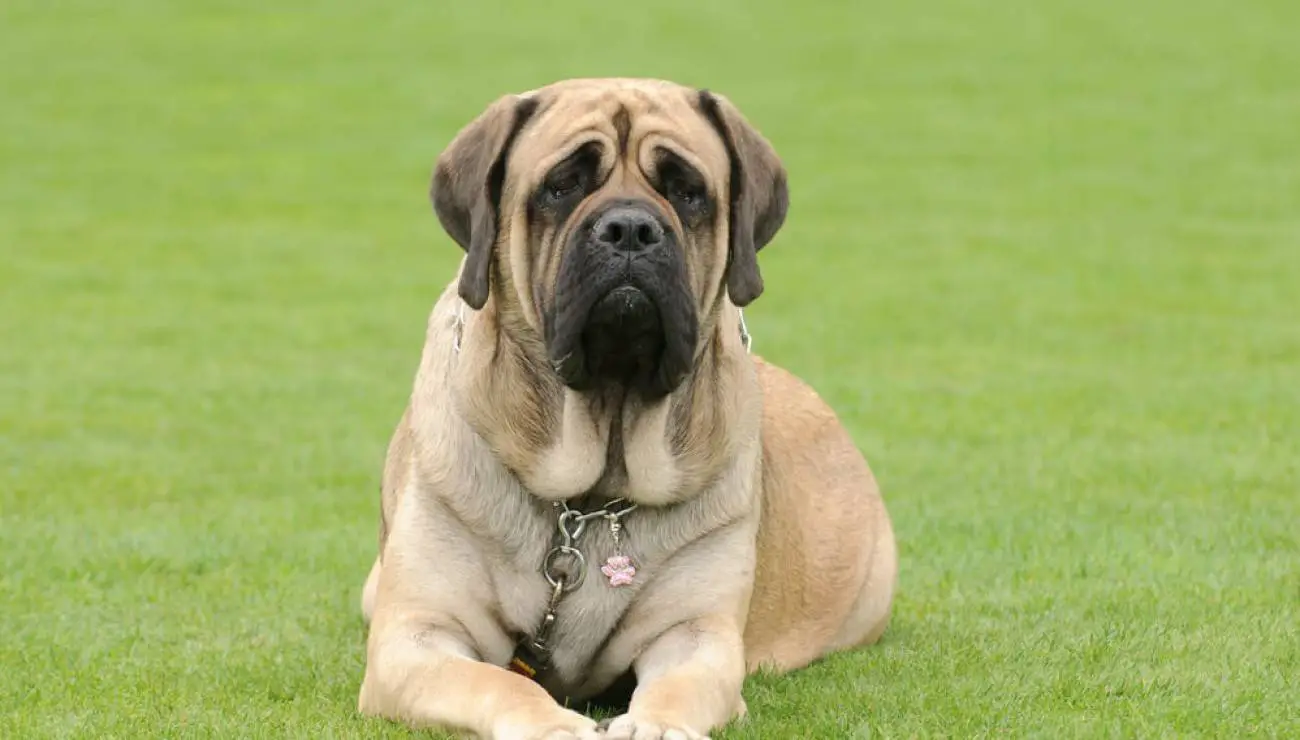
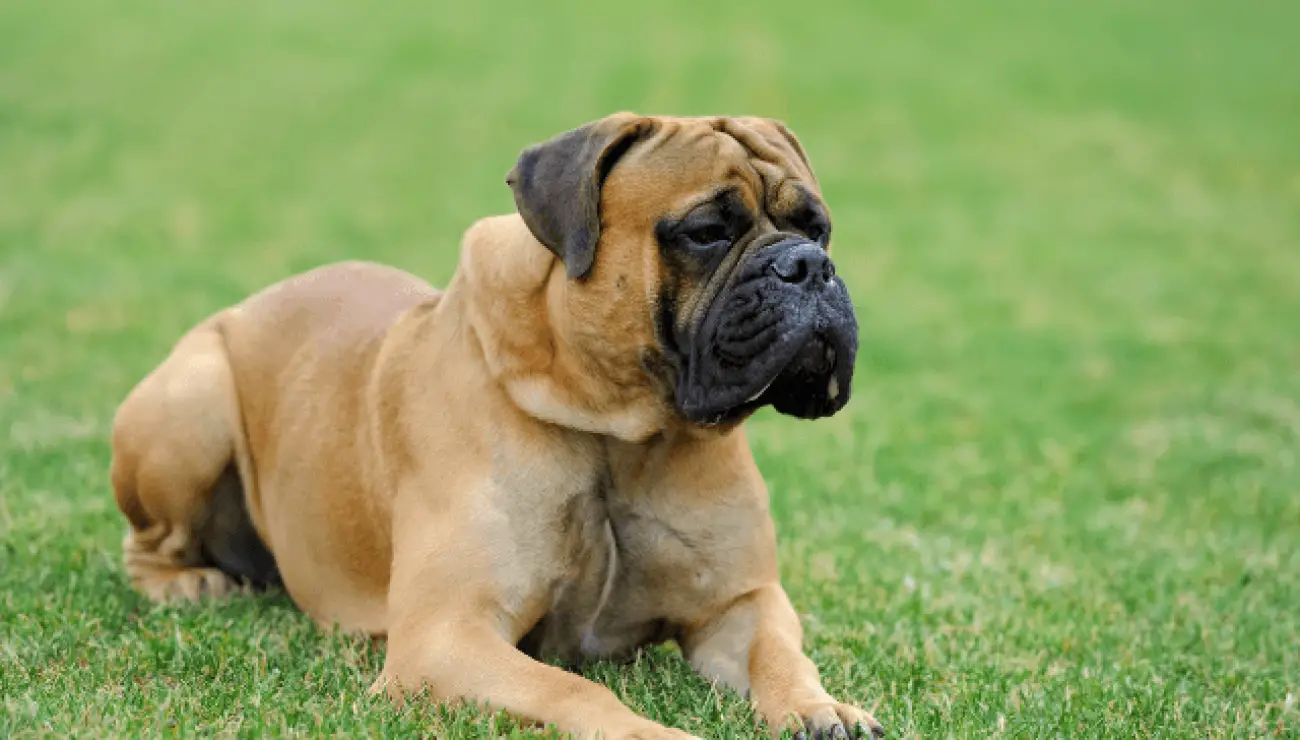
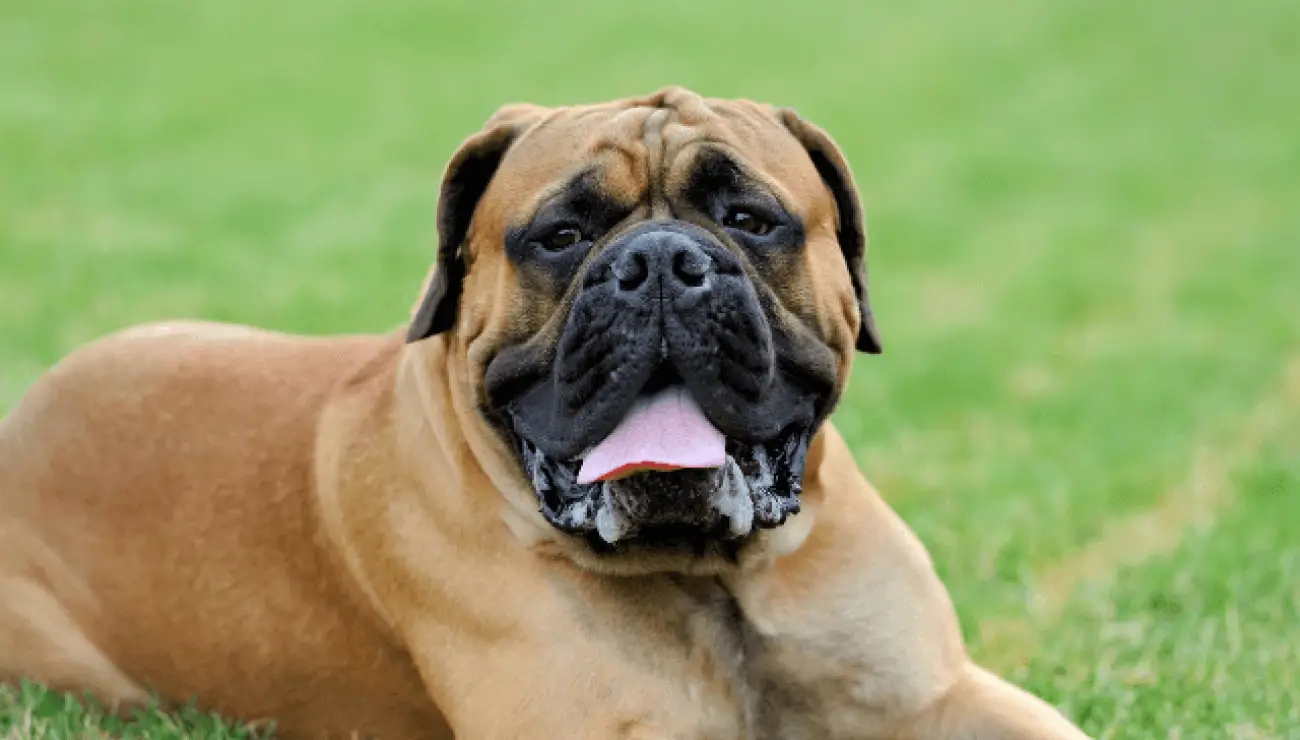
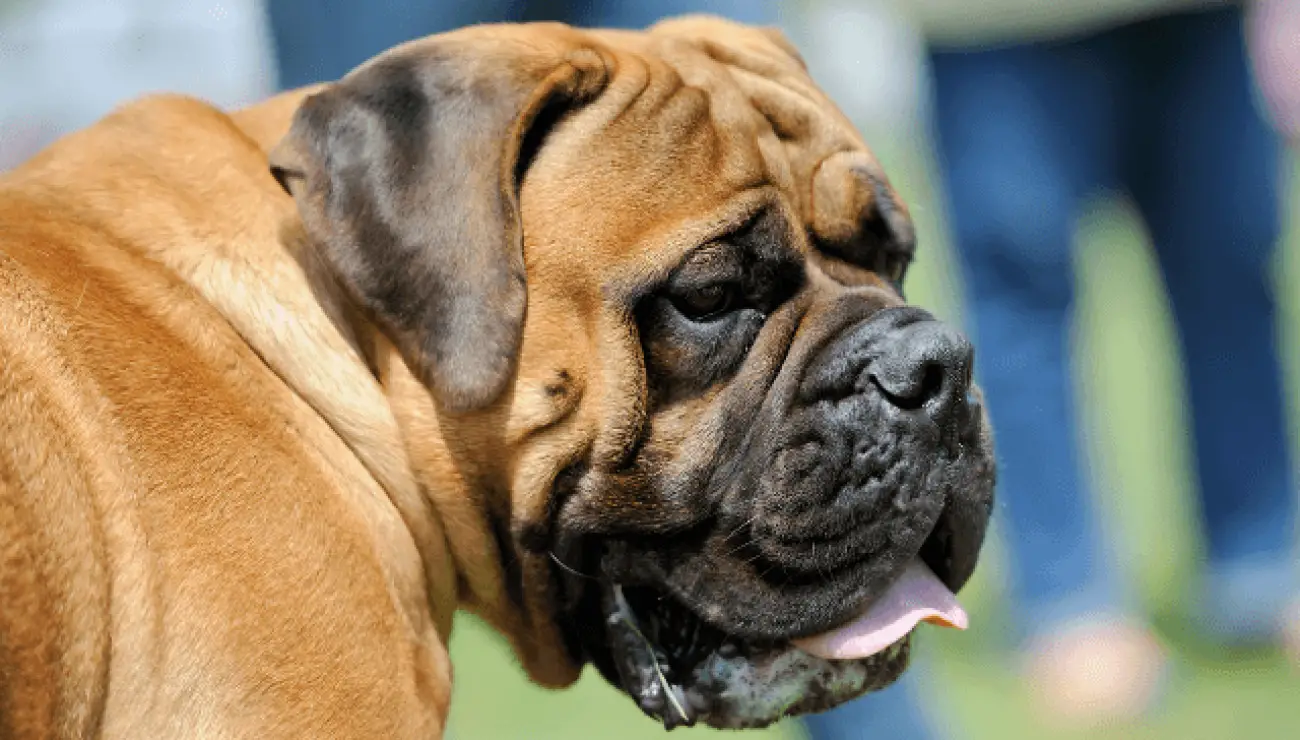
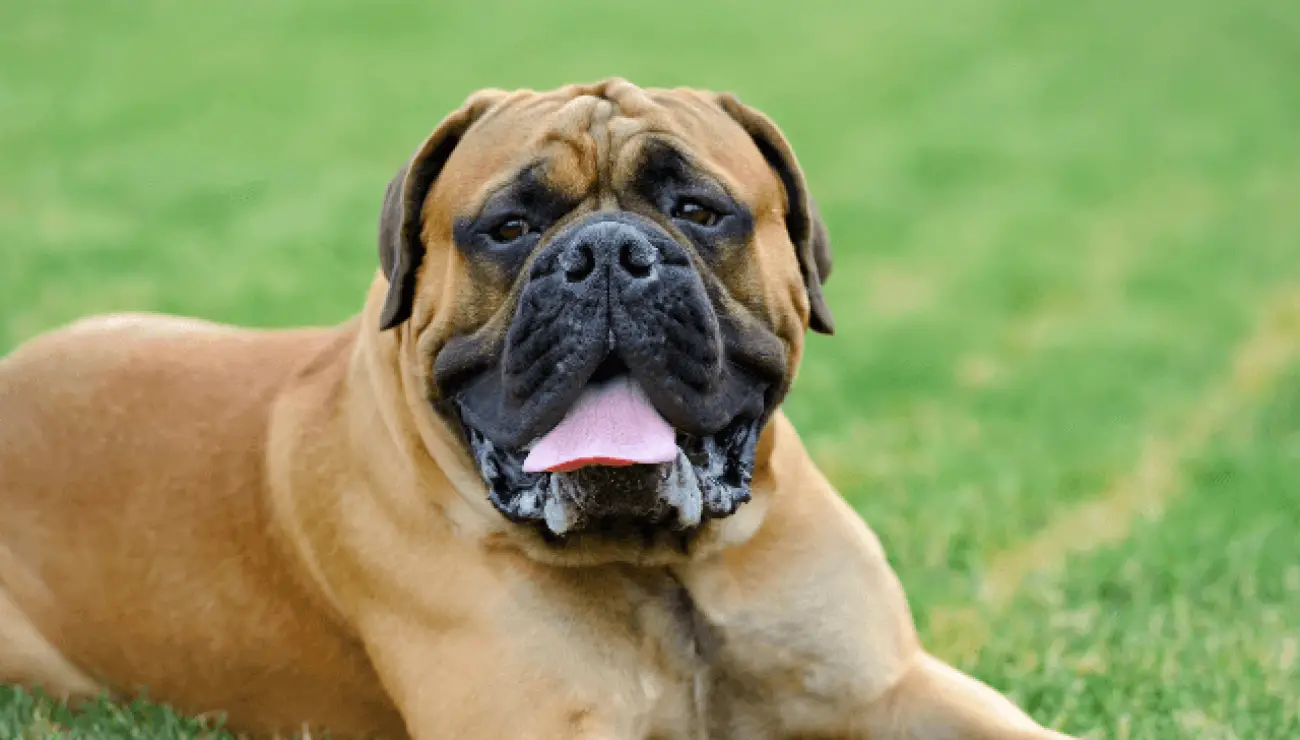
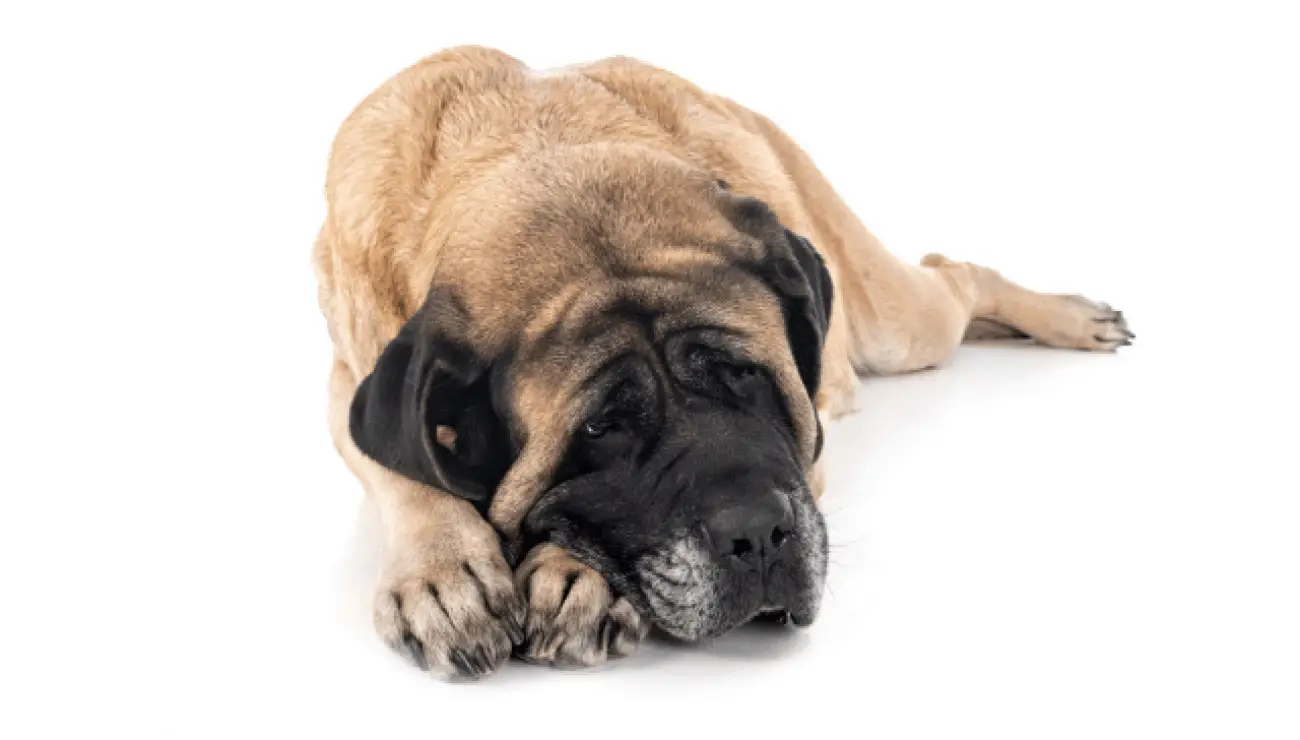

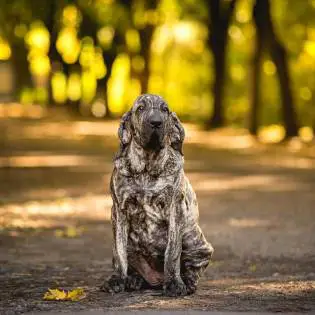
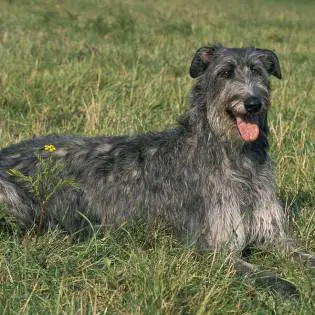
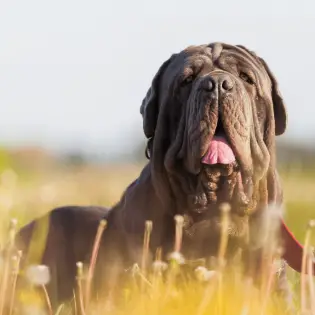

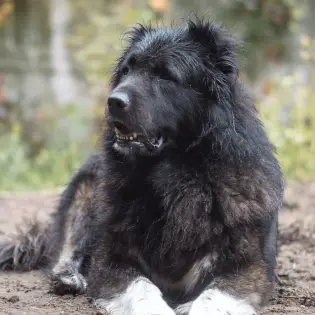

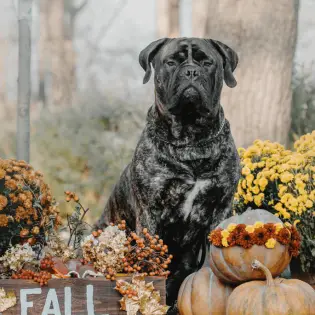

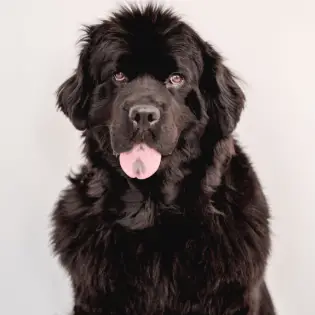

Share